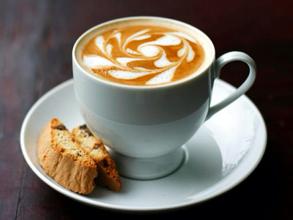Introduction to the producing areas of boutique coffee beans with coffee flavor and taste in Manor Alida, Panama
Panama is rich in mineral resources, but it is not exploited much, and the scale of the mine is small. The main minerals are gold, silver, copper, iron, mercury, bauxite, manganese, salt, oil and so on. The reserves of copper, salt and bauxite are relatively large. By 2013, Panama's copper ore reserves exceeded 200 million tons, ranking fourth in the world. Panama's proven copper reserves are rich in forest resources for 50 years, and there are many tree species, including mahogany, cedar, teak, mahogany, and cedar. The forest area of eastern Dalian Province is the most widely distributed, but it has not been fully exploited due to lack of market and for reasons such as national defense and protection of the natural ecological environment. [5] according to FAO estimates in 2010, the forest area of Panama is 4.29 million hectares, accounting for 57 per cent of the land area. The Panamanian flag was launched on November 3, 1904. The flag is rectangular and the ratio of length to width is 3:2. The flag consists of four rectangles of white, red and blue. White symbolizes peace; red and blue represent the former Panamanian Liberal Party and the Conservative Party respectively, and they are also symbols of the two parties' United struggle for the interests of the nation. The blue star on the white background at the top left represents loyalty and integrity, while the red star on the white background at the lower right represents the authority of the law. The design of the crosshairs divided into four pieces represents that Panama is located at the junction of South America, North America, Atlantic and Pacific Ocean. Red, blue and white are the colors of the American Stars and Stripes that support the independence of Panama. The flag was designed by Manuel Amador Guerrero, the first president of Panama, and the current government of Panama was formed on July 1, 2009. the main members are: vice President Juan Carlos Varela, Minister of the Presidential Office Jimmy Papadi Mittriu, Foreign Minister Fernando Nunez Favre, and State Interior Minister Jorge Ricardo Favre. Minister of Public Security Jose Raul Mulino, Minister of economy and Finance Frank George de Lima, Minister of Commerce and Industry Ricardo Quijano, Minister of Agriculture and Animal Husbandry Development Oscar Armando Osorio Kassar, Minister of Health Javier Diaz, Minister of Housing Yasmina Pimentel (female), Minister of Labour Armah Lorena Cortez (female) Guillermo Ferrufino, Minister of Social Development, Lucy Molina, Minister of Education (female), Minister of Public works, Jaime Ford, Minister of small and medium Enterprises (female), Minister of Canal Robert Roy, Minister of Tourism Salomon Sama
Species of Geisha were discovered in the Rose Summer Forest of Ethiopia in 1931 and sent to the Coffee Research Institute in Kenya, introduced to Uganda and Tanzania in 1936, introduced to Costa Rica in 1953, and Panama was introduced in the 1970s by Mr. Francis Coselazin of the Tonba Seven Farm Garden from CATIE in Costa Rica and began to grow Rose Summer Coffee.
Geisha, sweeping the coffee world with the power of a hurricane, the coffee revolution is so fierce that the blue mountains of Jamaica and Kona of Hawaii, which have long occupied the throne of the coffee kingdom, have to stay away. This wild species, which originated in Ethiopia, is now widely used in major coffee producing areas after numerous battles, and its best spokesman is the "LaEsmeralda" estate from Panama.
History of Esmeralda Farm: founded by Hans Elliot, a Swede, in 1924, Esmeralda Farm was not a coffee grower but a ranch. Forty years later, in 1964, Mr. Danielupidason's grandfather, Ruth Lover. Mr. Bidasson bought Esmeralda Farm in order to have an old home after retirement. His grandfather, Mr. Ruth Lover Bidasson, was born in Sweden and was president of the Bank of America and director of United Nations development. His son, Mr. Brais Bidarsson, moved to Panama from California in 1973 and inherited to run his father's farm. In 1987, most of the farms were changed to grow coffee. In 1994, he invested in the machinery and equipment of refined coffee in order to create a brand. Mr. Brais Bidarson and his wife Susan also raised three children, Elligu (born in Philadelphia in 1966). Rachel Lou (born in Sweden in 1967) and Danielu (born in Panama in 1974) in 1996 Blaise and Rachel visited a farm for sale in the Haramijun area of the Bocketi Valley and was attracted by the beautiful farm and bought it immediately. This is Esmeralda. Daniel Lou, the third son of Haramiqiong Farm. It is in this farm that Mr. Bidasson has grown Geisha coffee that attracts the attention of the coffee world.
The pronunciation of Geisha is the same as Japanese geisha, so it is also called geisha coffee. Because the tree species are taller than ordinary coffee trees, they are originally planted in a small area of the manor and are used as windbreaks. In order to take part in the annual competition for the best coffee in Panama, the son of the manor owner searched all the coffee trees in the manor for testing, which gave Geisha a chance to appear on the stage. After that, he also took part in various worldwide coffee competitions.

Important Notice :
前街咖啡 FrontStreet Coffee has moved to new addredd:
FrontStreet Coffee Address: 315,Donghua East Road,GuangZhou
Tel:020 38364473
- Prev

Panama Casa Luis Estate Coffee Flavor Taste Production Characteristics Fine Coffee Bean Introduction
Bourbon bourbon plants produce 20-30% more coffee than typical, but have a smaller harvest than most coffee varieties. Bourbon coffee has one less conical shape than the typical plant, but more secondary branches. The angle between branches and main stem is small, and the branch points of main stem are dense. Wide and wavy on leaf margin. The fruit is relatively small and dense. cherry mature
- Next

Introduction to the characteristics of coffee flavor and taste in lemon tree manor in Nicaragua
Columbus arrived here in 1502 and reached the east coast of Nicaragua. In 1522, Spanish colonists began to conquer the region. The cities of Granada and Leon were founded in 1524. From then on, Nicaragua became a Spanish colony and came under the jurisdiction of the Governor's Office of Guatemala. The city of Leon developed into a political and cultural center; Granada became a commercial and agricultural center. In the later period of colonial rule
Related
- Does Rose Summer choose Blue, Green or Red? Detailed explanation of Rose Summer Coffee plots and Classification in Panamanian Jade Manor
- What is the difference between the origin, producing area, processing plant, cooperative and manor of coffee beans?
- How fine does the espresso powder fit? how to grind the espresso?
- Sca coffee roasting degree color card coffee roasting degree 8 roasting color values what do you mean?
- The practice of lattes: how to make lattes at home
- Introduction to Indonesian Fine Coffee beans-- Java Coffee producing area of Indonesian Arabica Coffee
- How much will the flavor of light and medium roasted rose summer be expressed? What baking level is rose summer suitable for?
- Introduction to the characteristics of washing, sun-drying or wet-planing coffee commonly used in Mantenin, Indonesia
- Price characteristics of Arabica Coffee Bean Starbucks introduction to Manning Coffee Bean Taste producing area Variety Manor
- What is the authentic Yega flavor? What are the flavor characteristics of the really excellent Yejasuffi coffee beans?

